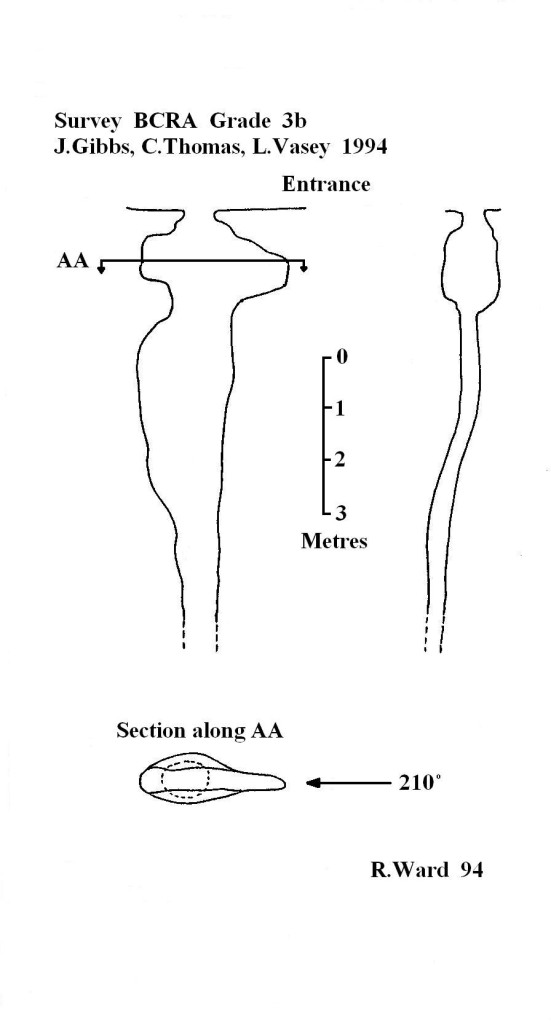Moorland Caver (2003)
NGR: SE 89828328
Alt: 100m
Length: Unknown at present.
Access:` Permission to descend is not granted.
In 708 Ad, a great battle took place at Ebberston. Alfred the Saxon King of Northumberland fought at the front until he was pierced with an arrow and whilst lying wounded and defenceless on the floor, he was speared in the thigh. During the night he was taken to a cave to rest and later moved to Driffield where he died from his injuries. He was buried in a local church
In 1770 a cairn was built on the hilltop just above the cave to commemorate the event.
History
Excavated by W.H.Lamplough and J.R.Lidster in 1950-1
Remains of seven humans (5 adults, 2 children) were found along with Flints, Pottery, Antler and Animal bones. These are assumed to be Early Neolithic although no carbon dating was done and all remains are now missing or lost. After the excavation, a large boulder was levered over the entrance effectively sealing it forever.
Thomas Hinderwell ‘History and Antiquities of Scarborough and the Vicinity (1798)
Upon the hill, above the house, is a small Cave, in a rock, called by the country people Ilfrid’s Hole; they inform the inquirer, from tradition of their ancestors, that a Saxon King of that name, being wounded in battle, fled from his pursuers, and took shelter in this cave, where he remained one night, and was next day conveyed to Driffield.
The following inscription, which was upon a stone over the Cave, and afterwards painted upon wood when the stone decayed, is remembered by some of the ancient inhabitants.
“Alfrid, King of Northumberland, was wounded in a bloody battle near this place, and was removed to Little Driffield where he lies buried: hard by, his entrenchments may be seen.”
An inclosure at the west end of Ebberston, adjoining the Pickering road, now known by the name of Bloody Close, strongly indicates that a battle has been fought there; but the tradition is, that Alfrid was wounded in a battle within the lines of Scam-ridge, (either Six Dikes, or Ofwy’s Dikes) near this place.
This Cave is now almost filled up by the falling in of the rock ; but several of the old people of the village remember when it would have contained eight or ten persons.
*Corrupt name for Alfrid’s Cave.


